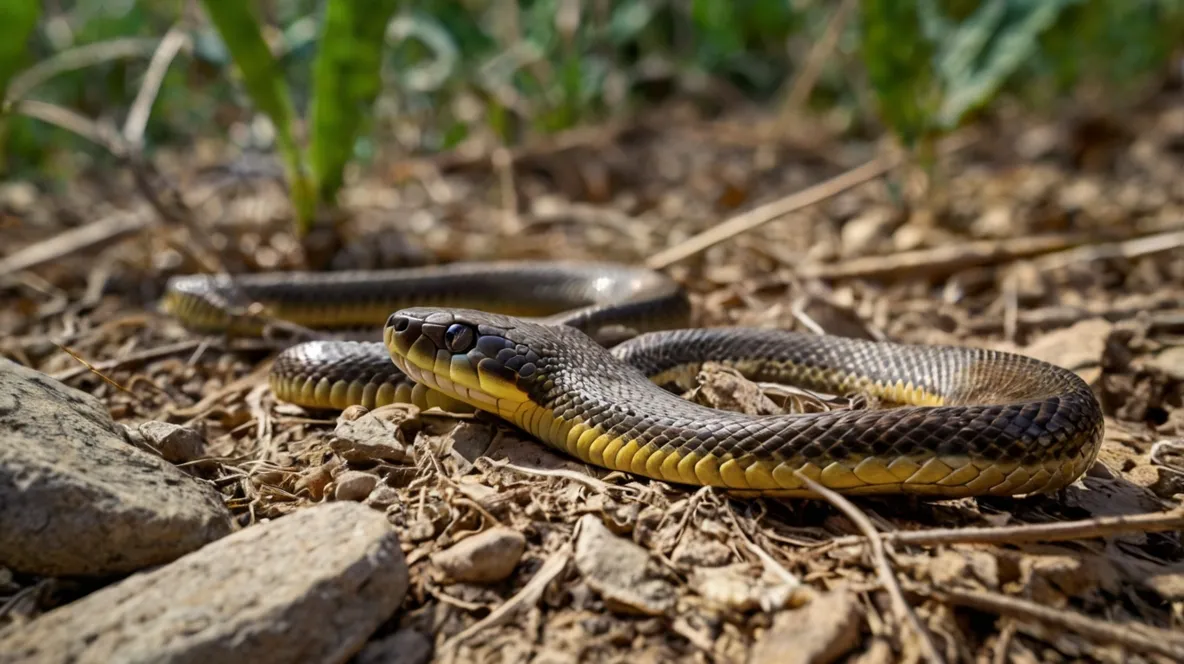Snake Handling & Habituation Guide
Handling and Interacting With Your Snake
Snakes are not domesticated in the same way as cats or dogs, but many species can become accustomed to gentle handling through patience and positive association. “Training” involves habituating your snake to your presence and touch, making necessary interactions less stressful for the animal. Temperament varies greatly between species and individuals.

Understanding Snake Behavior
Building trust requires understanding how snakes perceive the world.
- Defense, Not Aggression: Most defensive behaviors (hissing, striking, musking) stem from fear, not malice.
- Scent Oriented: Snakes explore their world heavily through scent. Wash hands before handling to remove food smells they might mistake for prey.
- Security Needs: Feeling secure is paramount. Proper handling involves supporting their body and allowing them control over their movements.
- Avoid Startling: Approach calmly and avoid sudden movements or approaching directly from above like a predator.
The Importance of Acclimation
Allow your new snake time to settle into its environment before initiating handling.
- Settling-In Period: Give your snake at least a week (or until after its first successful meal) with no handling, only essential maintenance.
- Calm Environment: Keep the area around the enclosure quiet and stable during this time.
- Observation: Use this period to observe your snake’s behavior and learn its routine without disturbing it.
- Stress Reduction: Skipping acclimation can lead to a chronically stressed and defensive snake.
Habituation and Positive Association
Get your snake used to your non-threatening presence.

- Presence Near Tank: Spend time near the enclosure, allowing the snake to see you regularly.
- Routine Interactions: Perform tank maintenance calmly and predictably.
- Hook Training (Optional): For some species, gently touching the snake with a snake hook before lifting can signal that it’s handling time, not feeding time, reducing the chance of a feeding response bite.
- Short Initial Sessions: Start with brief handling sessions (5-10 minutes) once the snake is settled.
Safe and Gentle Handling Techniques
Proper handling technique minimizes stress and ensures safety for both you and the snake.
- Wash Hands: Clean hands remove scents that might trigger a feeding response.
- Confident Approach: Approach calmly and deliberately. Hesitation can be perceived as threatening. Touch the snake gently on the mid-body before lifting.
- Support the Body: Lift the snake gently, supporting its body in at least two places. Avoid letting large sections dangle unsupported.
- Allow Movement: Let the snake move through your hands (like a “treadmill”). Don’t grip tightly or restrict movement unnecessarily.
- Avoid Head/Tail Focus: Don’t restrain the head or the tip of the tail.
- Supervise Closely: Never leave a snake unattended while handling, especially near heights.
- Handling Frequency: Regular, short sessions (e.g., 10-15 minutes several times a week) are better than infrequent long sessions.
Reading Your Snake’s Body Language
Recognizing stress signals helps you know when to end a handling session.
- Signs of Calmness: Slow, smooth movements; gentle tongue flicking; relaxed muscle tone.
- Signs of Stress/Fear: Rapid breathing; frantic or jerky movements; forming an ‘S’ shape (preparing to strike); hissing; musking (releasing foul-smelling fluid); trying constantly to hide or escape; tense muscles.
- Respect Boundaries: If the snake shows persistent stress signals, return it calmly to its enclosure. Forcing interaction will build negative associations.
- Shedding/Feeding: Avoid handling when the snake is in shed (eyes look cloudy or ‘blue’) or for 48 hours after feeding to prevent regurgitation.
Consistency is Key: Building tolerance to handling requires consistent, gentle interactions. Always aim to end sessions positively. Respect your snake’s individual temperament and never force interactions.